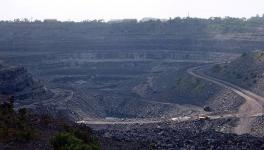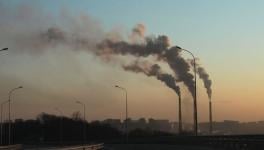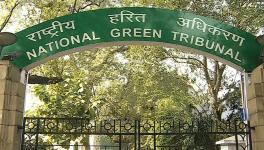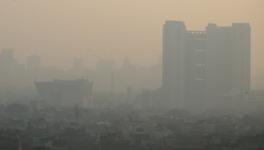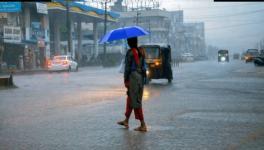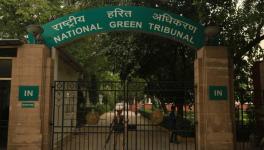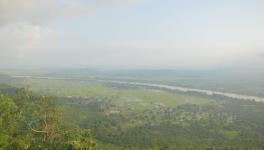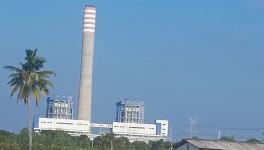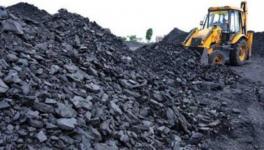Bengaluru Lakes Await Restoration, Expose Civic Bodies' Apathy
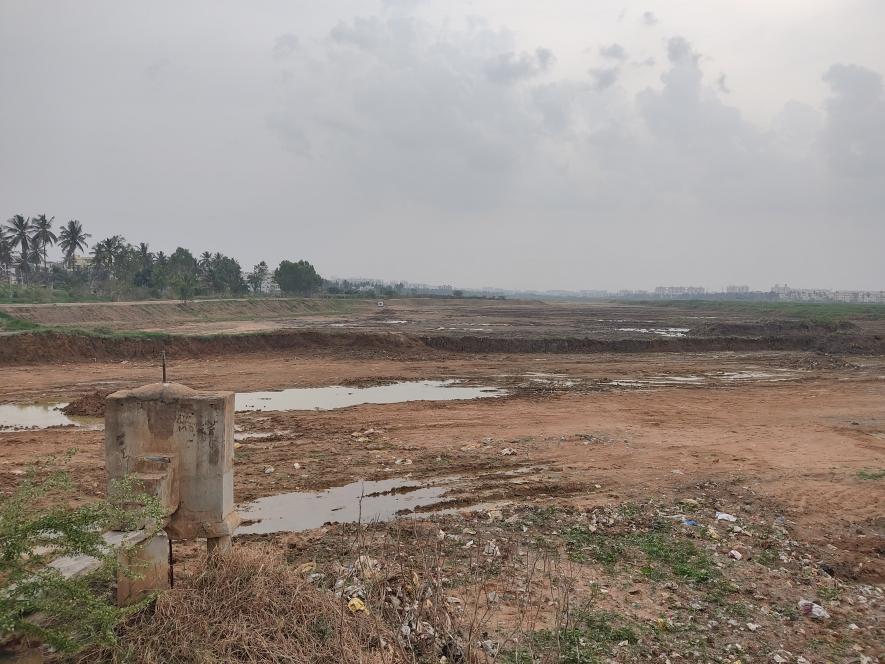
Varthur Lake. Photo by Saurav Kumar.
Half-dug barren land with solid debris left out in pockets of watery patches across hundreds of acres is the view of one of the largest lakes i.e., Varthur lake in the South-Eastern part of Bengaluru. The debilitating condition of the lake embodies the abysmal condition of wetlands in the city.
The rejuvenation of Bellandur and Varthur lakes seems to be no longer a serious concern for the civic bodies of Bengaluru. A number of hurdles like delays in marking out dumping sites and incessant rain have hindered the execution of lake de-silting.
The desilting project of the two lakes started in 2021 with an 18-month deadline; however, the Karnataka State Pollution Control Board (KSPCB) could not provide necessary information about the parts of the lakes with hazardous silt.
Spanning 439 acres, Varthur lake seems to be free from algal bloom, frothing, and fish mortality, but a large part of it has macrophyte (a green dense layer of aquatic plants) presence. The dilapidated outlook after promises of restoration and rejuvenation by the government is haunting the fate of water bodies.
The civic bodies responsible for lake management include Bruhat Bengaluru Mahanagara Palike (BBMP), Bangalore Development Authority (BDA), and Bangalore Water Supply and Sewerage Board (BWSSB).
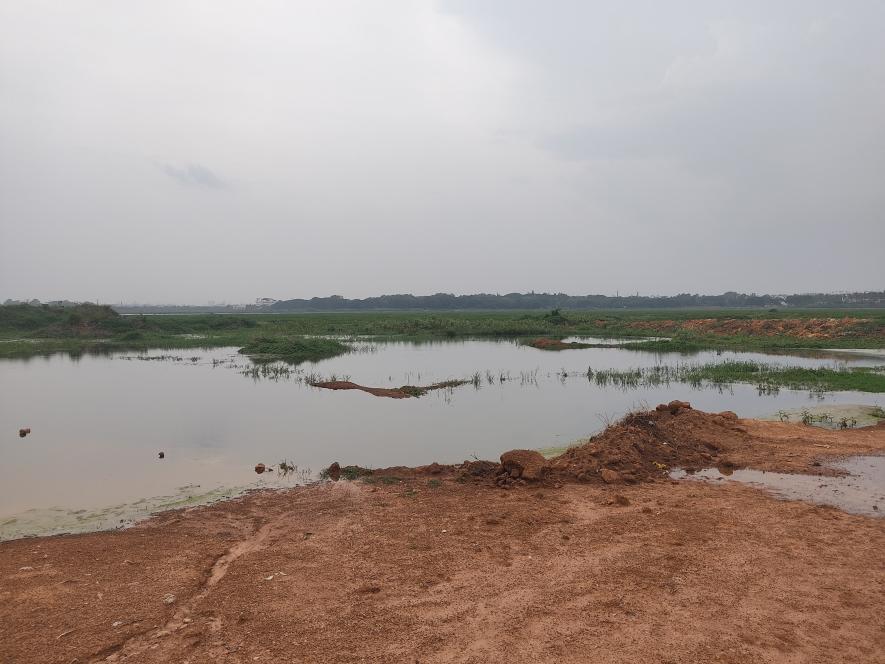
Bellandur lake. Photo by Saurav Kumar.
The Bellandur lake is the city's largest water body sprawling across 916 acres and is also in the grip of macrophyte infestations.
The total silt present in Bellandur lake adds up to 32.3 lakh cubic metres and the silt excavated so far amounts to 13.26 lakh cubic metres, said a BDA official, speaking to NewsClick on the condition of anonymity.
The lake, as per a 2017 research paper, falls under Class E following the Central Pollution Control Board’s (CPCB) Classification of Inland Surface Water.
Bellandur and Varthur lakes were built to store water for drinking and irrigation purposes, but unscientific planning has made them a collection point of untreated sewage and industrial waste.
The notable research institute Indian Institute of Science (IISc), in its research, has flagged looming threats over these two lakes and has laid out a blueprint for rejuvenation.
Shifting Deadlines
Restoring Bellandur and Varthur lakes seem to have become a burden for the civic bodies – shown by the constantly shifting deadlines.
In 2016, the Karnataka government appointed an expert committee that drafted recommendations to address the issues with these lakes.
In 2018, National Green Tribunal (NGT) bench set up a monitoring committee led by retired Supreme Court Judge Justice Santosh Hegde that ordered the BDA to de-weed and de-silt the Bellandur and Varthur lakes.
The monitoring committee was later dissolved.
The National Green Tribunal (NGT), while hearing cases related to Bellandur lake in March 2021, asked the Karnataka Chief Secretary to monitor the progress of the restoration of Bengaluru lakes.
BDA Assistant Engineer Aravind SS told NewsClick, “De-silting and transportation of silt from the Varthur and Bellandur lakes to Vittasandra and Marasandra was partially done in June 2022 before the onset of the monsoon, but it will take one more year.”
Citizens’ groups have raised concerns over the apathetic approach of the BBMP, BDA, and BWSSB towards the endangered lakes.
Jagadish Reddy, a member of a citizens group Varthur Rising, told Newsclick, “In 2016, the state government appointed an expert committee that drafted recommendations to address the issues with Varthur and Bellandur lakes. However, the recommendations were never implemented and so lakes remain under multiple threats.”
Jagadish added that the flow of untreated sewage is killing water bodies and has continued unabated. “For example, frothing is the result of dumping untreated sewage and industrial waste into water. Both Varthur and Bellandur lakes could be freed from froth with mechanical measures, but these are not permanent solutions.”
As per Jagadish, the dissolution of the NGT monitoring committee ended the accountability of civic authorities like the BDA, BBMP, BWSSB, KSPCB etc.
Deathbeds for Fish
Besides prolonged delays in restoration, lakes are rapidly turning into deathbeds for the fauna. The uncontrolled intrusion of sewage and wastewater into the lakes has led to recurring instances of massive fish deaths in the past few years.
According to the report submitted to the KSPCB, the water in 32 Lakes of Bengaluru was found to be unfit for aquatic ecosystems. It was fit only for irrigation and industrial purposes.
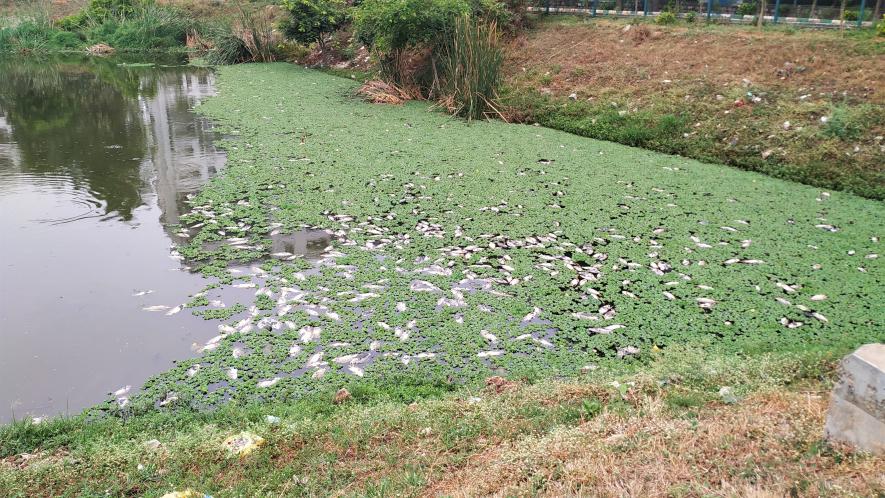
Photo by Raghavendra B. Pachhapur
And another report submitted the Action Aid Karnataka exposed the deteriorating conditions of lakes across the city. It mentioned that in 2022, the lakes witnessed 13 fish kills and between 2017 - 2021, there have been 24 instances of fish kills.
Get the latest reports & analysis with people's perspective on Protests, movements & deep analytical videos, discussions of the current affairs in your Telegram app. Subscribe to NewsClick's Telegram channel & get Real-Time updates on stories, as they get published on our website.









